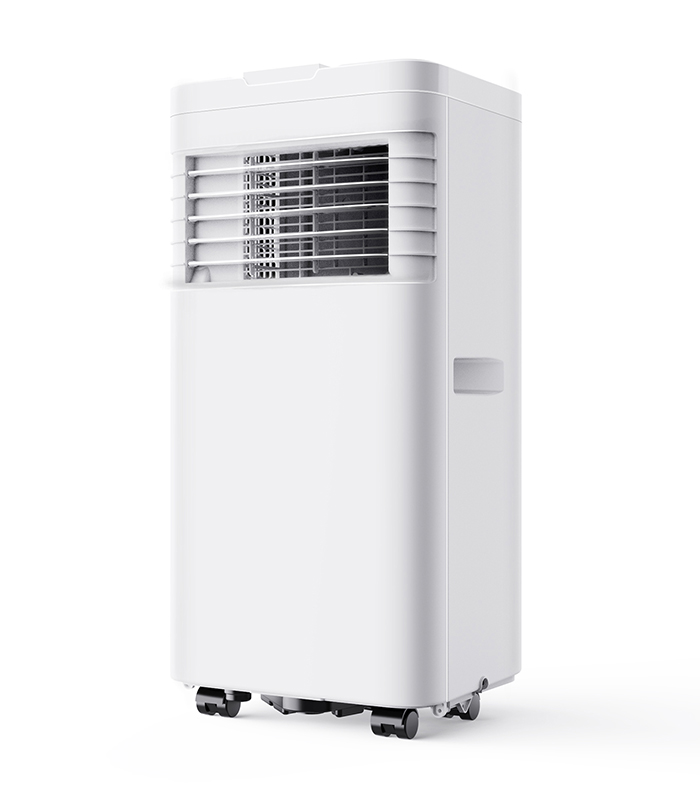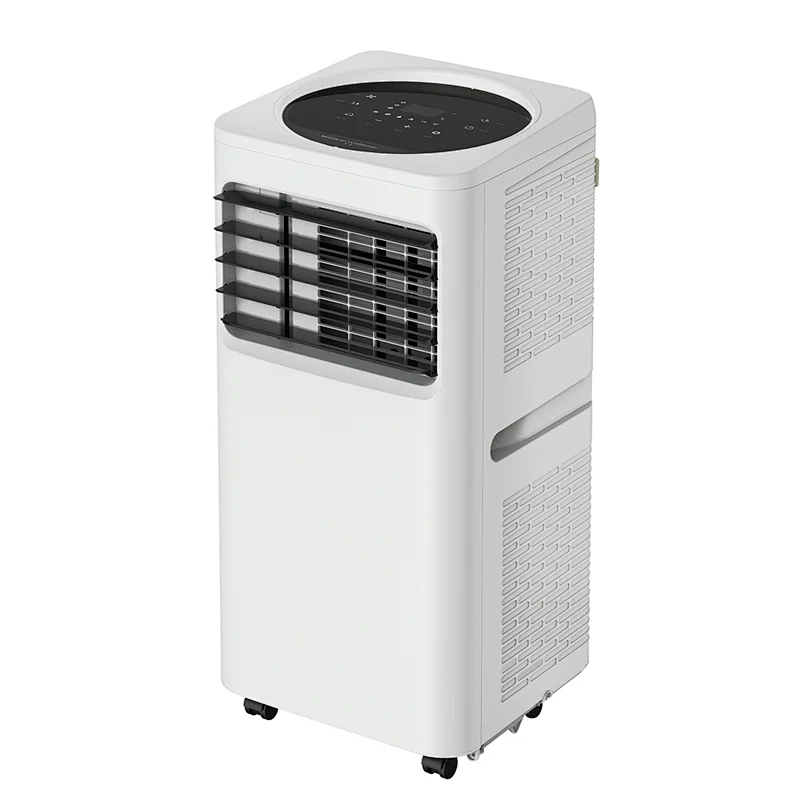Air conditioners are today ubiquitous household appliances and office equipment, continuously cooling and circulating fresh air. With energy-saving and space-saving requirements on the increase, air conditioner models today come in a variety of forms to suit many requirements, such as portability, green technology, and multi-functionality. In this guide, we have everything you need to know about choosing the appropriate air conditioner for your home or office, from types and technologies to installation and energy-saving features.

Understanding Air Conditioner Types: Matching Function to Space
The most appropriate air conditioner selection begins with a knowledge of what types are in the market and how each type is best applied based on varying room configurations and uses. From a small apartment to a big hall, the correct model guarantees comfort and efficiency.
Portable Air Conditioners for Flexible Use
Portable air conditioners are ideal when flexibility and easy installation are required. Portable air conditioners typically come with wheels, which makes it convenient for consumers to push them from one room to another without the need to undergo complex installation. They are ideal for renters or heating spaces where fixed installation may not be ideal. While occupying less space, most units on the market today have dual dehumidification and cooling functions, complementing the control over air temperature as well as indoor air quality.
Window and Wall-Mounted Units for Targeted Cooling
Window and wall-mounted air conditioners are traditional choices for a single room. They need to be mounted in an open window or specially designed wall cavity and provide effective spot cooling. They are easy to install and cheaper than split systems, with lower upfront cost. High-end models now feature remote controls, inverter technology, and smart sensors to enhance their convenience for users and energy efficiency.
Split-Type Air Conditioners for Quiet, Efficient Performance
Split air conditioners separate the air cooling unit and the compressor, therefore making them quieter and more energy efficient. They are installed extensively in bedrooms, living areas, and small offices. There are models that are cooling- and heating-based, which they can utilize all year round. Their capacity for being mounted on a high wall also allows for an easier distribution of cooled air around the room.

Air Conditioner Features That Enhance Everyday Comfort
Modern air conditioners are not just machines that produce cold air—there are a number of features that add to the user experience by leaps and bounds. From energy efficiency to smart connectivity, all these features revolutionize the way cooling machines become an integral part of daily life.
Energy-Efficient Inverter Technology
Inverter technology allows an air conditioner to operate at variable speeds, adjusting the compressor output according to the cooling requirement. It does away with start-stop cycles of traditional systems, reducing energy consumption and noise. Inverter systems would suit best those consumers who are interested in environmental sustainability and ongoing savings in electricity bills. Most inverter air conditioners sold in the market today carry high seasonal energy efficiency ratios (SEER), which justify their green credentials.
Smart Controls and Remote Operation
Smart controls render air conditioners Wi-Fi enabled, meaning that they can be connected to home networks. This provides the capability of control through mobile apps or voice assistants. Scheduling, changing temperature, and monitoring are more convenient, even when one is not at home. Most handy for frequent travelers or office managers who have to exert central control over multiple units, this feature is a boon.
Dual Function: Cooling and Dehumidifying
Moderate temperatures can be rendered uncomfortable due to high humidity. With this consideration, a dehumidification mode is a feature in the majority of modern air conditioners. These appliances not only increase thermal comfort but also safeguard indoor equipment and furniture from corrosion and mold by removing excess moisture from the air. In regions that experience seasonal rain or high humidity, this dual purpose is quite convenient.
Installation Tips for Optimizing Air Conditioner Efficiency
Correct installation comes in when it is a matter of an air conditioner’s performance and longevity. Regardless of the model, proper placement, ventilation, and insulation allow the unit to function to its potential.
Positioning for Maximum Airflow
Air conditioners should be installed where there is free airflow. For split systems, the installation of the indoor unit at a height on the wall gives freely circulating cool air in the room. Window and portable units should be installed at center, not in a corner or behind an object where airflow will be blocked. Free airflow not only increases comfort but also prevents the compressor from overworking.
Ensuring Proper Ventilation and Drainage
Window and portable air conditioners need access to outside venting to transfer heat. Venting incorrectly can cause the unit to run with hot air, hence making it useless. In the same manner, drainage systems must be installed accordingly to avoid water leakage or buildup of moisture inside. Self-evaporating technology models simplify this feature by reducing the need for manual draining.
Using Insulation to Reduce Heat Transfer
Addition of air conditioner installation to insulation components also assists in energy conservation. Sealing window gaps or using insulating curtains keeps the internal temperature constant. Insulation of duct or piping in commercial installations keeps heat gain at bay when transferring air. These add-on features assist in reducing energy load and improving overall system performance.

Choosing an Air Conditioner Based on Room Size and Usage
Correct selection of air conditioner capacity is determined by the size of the room, occupants, and heat-producing equipment. Oversizing and undersizing of the equipment will both result in inefficiency and premature equipment wear over time.
Calculating Cooling Requirements by BTU
British Thermal Units (BTUs) are used to define the air conditioner cooling capacity. For example, a small room below 150 square feet requires 5,000 to 6,000 BTUs, whereas a 400 square foot living room or office may require 10,000 to 12,000 BTUs. Online calculators or otherwise experts help determine the right capacity and avoid energy loss.
Factoring in Room Orientation and Insulation
A room that lacks shading or has poor insulation will require a bigger capacity unit compared to that of a well-shaded room. Moreover, top floor rooms in a building are hotter due to the direct sunlight they are exposed to. All these factors have to be put into consideration to ensure that underperformance and overheating are avoided.
Matching Air Conditioners with Room Functionality
Bedrooms typically require quieter units with sleep-enhancing capabilities like night mode or auto-dimming. Kitchens may require units with heat tolerance and high airflow, while offices are best served by multi-zone units with the ability to independently control separate working areas. Understanding how the room is going to be used guarantees the air conditioner can meet actual comfort needs.
Maintenance and Longevity of Air Conditioners
Keeping an air conditioner in good working order ensures high efficiency, reduces the likelihood of breakdown, and extends its lifespan. New equipment has been designed with maintenance made simpler through filters and parts that can be cleaned or replaced without seeking professional help.
Cleaning Filters and Indoor Components
The buildup of dust and debris in filters impedes air flow and diminishes cooling capacity. The majority of new air conditioners have washable, removable filters and can be cleaned by users monthly. Some units even have filter change indicators that signal when maintenance is necessary.
Scheduling Regular Professional Servicing
Though the users have control over the surface cleaning, it is still advisable to allow a technician to inspect the entire unit once or twice yearly. Some of these include refrigerant level inspection, compressor function, and electrical connections. Issue detection in advance eliminates the possibility of system failure during peak demand periods.
Monitoring for Unusual Sounds and Odors
Unusual noises, such as buzzing or clicking, can indicate fan or capacitor issues internally. Similarly, mildewy smells can indicate microbial growth in the drain pan or coils. Addressing these warnings promptly prevents extensive repairs and maintains indoor freshness.
Experience Smart Cooling with UnitedStar Air Conditioners
Be smart — where advanced cooling meets smart climatic control. Where energy-efficient technology and ease of use converge, UnitedStar Air Conditioners turn your room into an ever-cool, clean, and comfortable haven — one that automatically adapts to temperature changes day in and day out. Steadfastly built for long-term use at home or commercial applications, every unit delivers precise cooling capacity in quiet performance and sleek, space-saving aesthetics. From super-slim systems ideal for one room to large-capacity units that cool wide open spaces, every model is designed for intelligent operation, low maintenance, and even air distribution. With simple digital controls, programmable timers, and multi-mode operation, UnitedStar air conditioners provide versatile, easy-to-use control and dependable cooling all year round. Beating the heat at home during summer, maximizing office comfort, or providing consistent indoor climates in retail or hospitality environments, UnitedStar provides low-noise, efficient air conditioning with reliable operation — day in and day out.
Conclusion
Air conditioners are multi-function units that combine comfort, efficiency, and smart control today. From a small bedroom space to a big commercial space, there is an appropriate model of air conditioner available to suit individual needs of every user. By putting energy efficiency, personalized function, and proper installation at high priorities, users can enhance their indoor climate dramatically at a low operating cost. In shopping around for units, put features such as inverter technology, remote control, and ease of maintenance high on your priority list. These features translate to longer life and greater returns on investment. For as complex as they are to design into harmony with shifting climate patterns and household requirements, air conditioners today are no luxury but a necessity of healthy, comfortable indoor life. You can visit Reliable Electric Fan Brand and Portable Air Conditioner Brand-UnitedStar to discover more details.


